Ryan Hall's Blog, page 357
September 3, 2015
75-Year-Old Keeps Rock ‘n’ Roll Virginia Beach Streak Alive
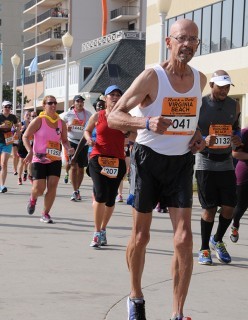
Photo: Rock 'n' Roll Marathon Series
Chet Coates’ first foray into adult exercise was cycling.
“I bought a 10-speed bike,” Coates recalls. “It wasn’t a marriage because my butt and that skinny seat weren’t a marriage.”
Instead, Coates tried sweating by foot, joining the early 1980s jogging craze. Initially, the Silver Spring, Md., resident stepped outside his front door, jogged five blocks to the local 7-Eleven, chatted up a friend who worked there, swigged some coffee, then sloshed home.
Coates has come a ways since jogging to Slurpee heaven. At 75 years old, his next marathon will be his 50th. He ran 40 races in 2014 and the competitive juices are still roiling.
“I ran a 10K [recently],” he says. “I saw one guy in front of me who may have been in his 70s, so I said, ‘I‘ve got to get his butt,’ and ran him down. I saw another guy who may have been 70 and thought, ‘Here’s another one.’ I got him.”
In the final mile, Coates’ clocked a 9:49, his fastest in the race. “I’m always trying to improve,” he says.
And he’s always running the Humana Rock ‘n’ Roll Virginia Beach Half Marathon. Coates has run all 14 Virginia Beach half marathons and the streak will hit 15 come Labor Day weekend. He’s a living, breathing example of not letting age slow you down. He keeps moving.
Coates’ home sits on a 13,000-square-foot lot, where he stills mows the lawn. It takes about 70 minutes. When reached by phone late one afternoon, Coates rattled off a Cliffs Notes version of his day: A 6-mile early-morning jog, shower, lift weights at the gym, run seven 200-meter intervals on the treadmill, stretch, shower again, cut the grass.
Coates and his wife of 47 years, Charlotte, are raising one of their six great grand children, a 14-year-old boy. They’ve raised Nijier Coates since he was 2 weeks old.
“I’m one of those chauffeur parents,” Coates says. “I have to take him ice skating three times a week, and diving. I just chauffeur his ass around.”
However, Coates’ irascible front is more act than reality. “He’s a father all over again,” Charlotte says. “To me, he’s a better father to this child than he was to ours. He’s more sensitive. He’s a very, very good father. He has more time to listen and reason with him.”
Coates began jogging in 1980. He didn’t run his first road race until 1985, a 5-miler covered in 40 minutes, 10 seconds.
He then ran his first 26.2-miler in 1987, the Marine Corps Marathon, finishing in 4:01:12. His PR is 3:28:57 set in 1991. Last year he ran five marathons, his fastest clocked in 5:03. He typically runs five or six days a week, totaling 35 to 40 miles.
“Mechanically, I think I’m pretty good,” says Coates, who practices yoga once a week. “I don’t have any ankle, knee or hip problems.” This may also be in part due to his weight of 150 pounds that hasn’t fluctuated much since entering the Army in 1963.
When asked what he thinks about during his runs, Coates lets that faux cranky exterior flash, blurting, “Why am I running so damn slow?” But later, he lifts the curtain and reveals part of what motivates him. “In the back of my mind, foolishly I’m trying to get back to where I was 25 years ago,” he says. “I know I’m not [going to get there], but I’m not going to stop trying.”
RELATED: 80-year-old Preps for His 15th Rock ‘n’ Roll Virginia Beach Half Marathon
The post 75-Year-Old Keeps Rock ‘n’ Roll Virginia Beach Streak Alive appeared first on Competitor.com.
Trail of the Week: Hoh River Trail, Olympic National Park

Photo: Ilya Katsnelson /Flickr
Our Trail of the Week feature is made possible through a partnership with Trail Run Project.
One of America’s last remaining rainforests features a 17-mile path ripe for good trail running. The Hoh Rainforest on the Olympic Peninsula in Washington—and within Olympic National Park—lies about 150 miles west of Seattle.
The Hoh’s major running trail is the Hoh River trail, which leads 17.3 miles to Glacier Meadows and Blue Glacier, on the shoulder of Mount Olympus. Most people run the initial parts of this trail and turn around to retrace their steps once they have been overwhelmed with enough beauty. For this reason, the number of other users drops off after the first few miles, even though this is one of the most heavily used trails in the park.
From the Hoh Rainforest Visitor Center area, take the paved loop east for just 0.2 miles to the junction with Hoh River Trail. This well groomed, easy trail ascends the lush river valley along the north bank of the braided Hoh River. The heavily wooded and mossy trail is mostly flat for the first 12 miles. The first good view of the river comes around 1 mile, although you’ll likely have heard the rush of its waters over the birdsong much earlier. Spot Mount Tom and the High Divide from here. Pass campsites, two small falls and the impressive Cougar Creek cedar grove. After 5.3 miles, you arrive at Five Mile Island, a meadow-like spot formed by a huge gravel bar. Elk often can be found here and there are good views up valley. This is a worthwhile destination after which many people turn around.
For those continuing on, the trail takes on a more mystical wild feel away from other people. Pass the Happy Four shelter, several more campsites and cross a rickety bridge. After the Olympus summer ranger station and the intersection with Hoh Lake Trail, you start really feeling isolated. Marvel at the blue Hoh River water as you near its source. Wind towards the river and away from it, through meadows and dense forest. Begin an abrupt ascent climbing 3,000 feet over four miles through narrowing valleys and over a gorge via the High Ho Bridge.
The Data
Miles: 17.1
Runnable: 88 percent
Singletrack: 100 percent
Average Grade: 6 percent
Max Grade: 32 percent
Total Ascent: 4,897 feet
Total Descent: -427 feet
Highest Elevation: 5,089 feet
For a closer look, check out the interactive map, data, photos and virtual run simulator courtesy of Trail Run Project:
The post Trail of the Week: Hoh River Trail, Olympic National Park appeared first on Competitor.com.
September 2, 2015
Out There: No Such Thing as a Know-It-All

A few years ago, I hired a running coach—for the purposes of this column, we’ll call her “Polly.” Though Polly was incredibly nice and one of the most motivating people I’ve met (both important qualities), I eventually learned she lacked one of the most critical elements of a running coach: actual knowledge of how to coach runners.
It wasn’t obvious at first. Polly did a good job playing the role of expert, and I bought what she was selling (literally, with a monthly coaching fee deducted from my bank account). But the more time I spent under her tutelage, the more questions I had about her approach to training. When I asked to modify the plan, she said no. When I said her strategies weren’t working for me, she insisted it worked for others, so I must not be trying hard enough. When I dared question her tactics, she was quick to point out how little I knew about running.
One day, I finally decided to research some of the “facts” she spouted about her training philosophy, only to come face-to-face with reality: my so-called expert, the person I turned to because I didn’t know enough to coach myself, wasn’t such an expert after all.
Eventually, I learned that Polly had only been a runner herself for two years. Her coaching style was identical to the way she had been coached, and the training plans she sent me were the exact same training plans she had followed. The “facts” she shared with me about her training philosophy weren’t facts; they were merely vague, unfounded claims she could recite, but never explain.
She wasn’t an expert—she was a parrot. And I was an idiot for hiring a parrot to coach me to a PR.
Looking back, I cringe at my own stupidity. In addition to bypassing the research portion of hiring Polly, I ignored a lot of red flags during our coach-athlete relationship. The biggest one, of course, is that Polly claimed to know it all.
Here’s the problem with that line of thinking: Nobody knows it all. It’s dangerous to say so; once a person proclaims expertise, it usually signals an end to learning. In the case of Polly, she learned one training strategy that was effective for her, and therefore decided she knew enough to tell other people how to train. That’s how parrots are made.
RELATED: 5 Reasons to Hire a Running Coach
In the years since that eye-opening experience, I’ve encountered dozens of coaches like Polly. Just recently, a friend of mine came to me with a “Polly” story of her own, and the experience left her diminished and embittered. These parrots serve as a stark reminder that just about anyone with the time and willingness can call themselves a coach—but that doesn’t mean they should.
It took months after leaving Polly to find the joy in running again, and even longer before I fully trusted a new coach. When that coach asked for input on my training plan, it made me scoff.
“You’re the expert,” I said. “You tell me what to do.”
“Actually, no,” he replied. “You know yourself better than anyone. That makes you the expert.”
With that statement, I realized I had ignored another big red flag in my tumultuous situation with Polly: failure to give myself some credit. Though I admittedly didn’t know a lot about running back then, I did know how I felt about running under her guidance, and it wasn’t good. In hindsight, I should have listened to my gut.
Take heart—there are very, very good running coaches out there. I have met them, I have worked with them, and I have learned so much from them. The biggest thing I’ve learned, are that the best coaches are the ones who don’t know it all. Instead, they’re the ones whose knowledge complements, not overrides, what an athlete brings to the table.
RELATED: New Runners: How to Choose a Coach
****
About The Author:
Susan Lacke does 5Ks, Ironman Triathlons and everything in between to justify her love for cupcakes (yes, she eats that many). Susan lives and trains in Salt Lake City, Utah with three animals: A labrador, a cattle dog, and a freakishly tall triathlete husband. She claims to be of sound mind, though this has yet to be substantiated by a medical expert. Follow her on Twitter: @SusanLacke
The post Out There: No Such Thing as a Know-It-All appeared first on Competitor.com.
Ask the Experts: Ryan Martin Talks Nutrition, Training, Drills
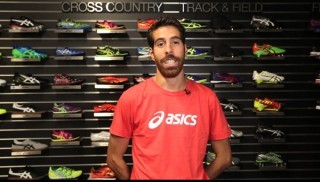
Recently, ASICS professional runner Ryan Martin answered a variety of reader-submitted questions, ranging from nutrition strategies to favorite drills to training strategy as the season progresses.
The post Ask the Experts: Ryan Martin Talks Nutrition, Training, Drills appeared first on Competitor.com.
Scientists May Have Pinpointed the Reason for ‘Runner’s High’

Photo: Shutterstock.com
Runner’s high is real—just ask any runner—and now, scientists may have found an explanation for it.
A new study published by Cell Metabolism concludes that running-induced endorphins stem from leptin, a fat cell-derived hormone that signals to the brain when the body has enough fuel and energy. The new research suggests that falling leptin levels “send a hunger signal to the brain’s pleasure center to generate the rewarding effects of running.”
“Based on these findings, we think that a fall in leptin levels increases motivation for physical activity as a means to enhance exploration and the pursuit of food,” senior study author Stephanie Fulton of the University of Montreal said in a press release. “Our study also suggests that people with lower fat-adjusted leptin levels, such as high-performance marathon runners, could potentially be more susceptible to the rewarding effects of running and thus possibly more inclined to exercise.”
Low leptin levels have previously been linked to exercise addiction and fast marathon times in humans, as well as greater running speed in mice. But this is the first time it’s been linked with the feeling of euphoria many runners get.
The scientists used genetically engineered mice that lacked STAT3, a leptin-sensitive protein which relays the leptin signal specifically in neurons that release dopamine. With a running wheel in their cage, the STAT3-deficient mice ran almost twice as much as normal mice and spent more time in a part of the cage that had the running wheel, suggesting that a drop of leptin-induced STAT3 correlates with an increase in the rewarding effects of running.
The scientists plan to further explore this link, testing the hypothesis of running reward being associated with food seeking among other theories.
“We do not want people to think that leptin is the only metabolic signal controlling the rewarding effects of running,” Fulton said. “Likewise, dopamine is not the only brain chemical involved. More work is needed to parcel out the precise contribution of dopamine, opioid and endogenous cannabinoid signals and the manner by which they interact to impact physical activities and its rewarding effects.”
The post Scientists May Have Pinpointed the Reason for ‘Runner’s High’ appeared first on Competitor.com.
Shoe of the Week: Skechers GoRun Ultra Road
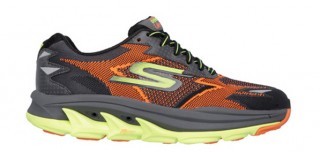
The GoRun Ultra Road is the most cushioned shoe from Skechers Performance yet.
Fit-Feel-Ride: Although Skechers Performance was founded around lightweight, low-to-the-ground neutral training and racing flats with a decidedly natural feel, the brand has evolved to include a few slightly more structured shoes with additional cushioning and support. The best one so far is the maximally cushioned GoRun Ultra Road, a neutral model with an engineered knit upper that moves and flexes with the foot while also providing some dynamic support to keep the foot locked in place. It’s not a stability shoe (and isn’t meant for severe overpronators), but it has more material underfoot than previous Skechers Performance and it’s not nearly as marshmallowy soft as the original GoRun Ultra and GoRun Ultra 2 or as flimsy as some of the original GoRun models. Like some of its svelte cousins, it has a soft, flexible feeling underfoot, but it also has enough structure for long-distance running, thanks in part to much more durable outsole interspersed with sturdy rubber pods.
What makes this unique from many maximally cushioned shoes is that it’s both soft and cushy but amazingly responsive too, due to thick layers of absorbent and resilient foam sandwiched together in the midsole. It’s a shoe that can accommodate 2-hour-plus training runs with long-wearing comfort, while also serving as your shoe of choice for long intervals and tempo runs. Several of our wear-testers suggested it was one of the best maximally cushioned shoes they’ve ever run in.
This is the shoe for you if … You’re looking for a max-cushioned, smooth-riding shoe for long-distance running.
Price: $115
Weights: 10.4 oz. (men’s 9.0), 8.3 oz. (women’s 7.0)
Heel-Toe Offset: 4mm; 30mm (heel), 26mm (forefoot)
Info: Skechers Performance
RELATED: Shoe of the Week—Hoka One One Clifton 2
The post Shoe of the Week: Skechers GoRun Ultra Road appeared first on Competitor.com.
September 1, 2015
Photos: Amazing Images from the 2015 Ultra-Trail du Mont-Blanc

The 13th annual Ultra-Trail du Mont-Blanc trail running race was held Aug. 28-30 in Chamonix, France. The 104-mile race sends runners around the the Mont Blanc massif, the largest mountain range in Western Europe, on a through-the-night voyage through parts of France, Italy and Switzerland. Runners tackle more than 30,000 feet of vertical gain and go up and over 10 mountains before reaching the finish line back in Chamonix. In all, more than 7,250 runners tackled one of the five races during UTMB week that ranged in length between 50K and 300K.
RELATED: Americans Run Strong at UTMB, CCC in Chamonix
Photo Gallery
1 of {count}
Back to Start
View Larger Image
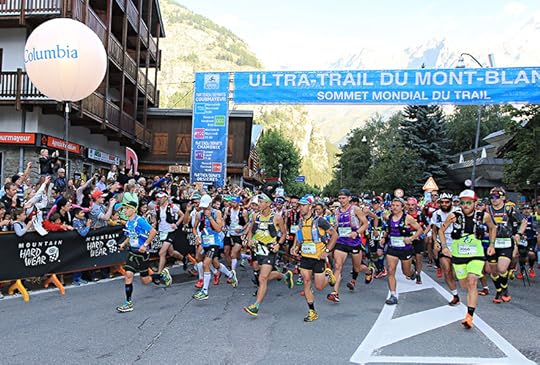
2015 Ultra-Trail du Mont-Blanc
About 1,800 runners started the 101K (63-mile) Courmayeur-Champex-Chamonix (CCC) race on Friday morning from the small Italian village on the south side of the Mont Blanc mountain range. Photo: Franck Oddoux/ULTRA-TRAIL DU MONT-BLANC
View Larger Image
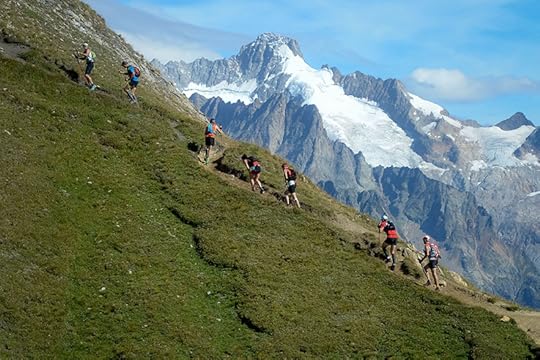
2015 Ultra-Trail du Mont-Blanc
The CCC race covers most of the final two-thirds of the UTMB race, plus one additional lung-burning 4,500-foot ascent at the start of the race. Photo: Pascal Tournaire/ULTRA-TRAIL DU MONT-BLANC
View Larger Image
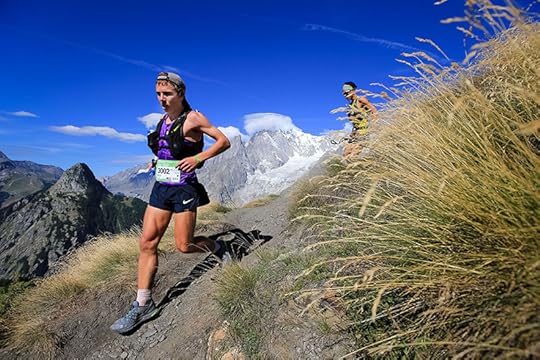
2015 Ultra-Trail du Mont-Blanc
American Zach Miller from Colorado Springs was among the early leaders in the CCC. Photo: Franck Oddoux/ULTRA-TRAIL DU MONT-BLANC
View Larger Image
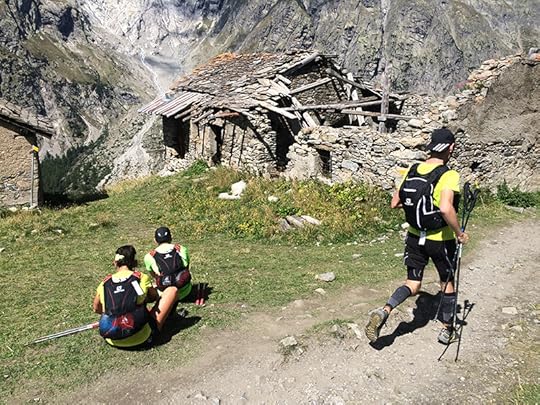
2015 Ultra-Trail du Mont-Blanc
The trail used for the races dates back hundreds of years. Long before it was a recreational trail, it was used as the main mode of transportation between mountain villages. Photo: Brian Metzler
View Larger Image

2015 Ultra-Trail du Mont-Blanc
At almost every point on the course, there are views of massive peaks within the Mont Blanc range. Photo: Pascal Tournaire/ULTRA-TRAIL DU MONT-BLANC
View Larger Image
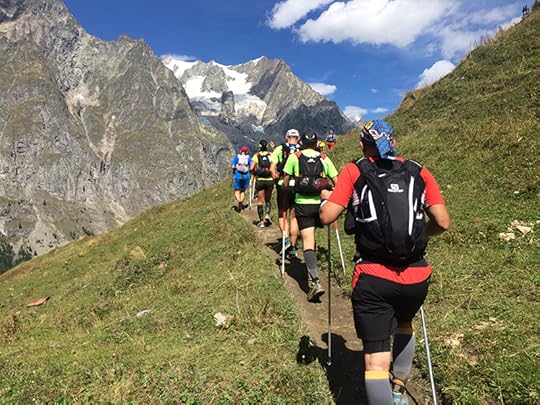
2015 Ultra-Trail du Mont-Blanc
Most of the course in Italy is on buffed-out singletrack dirt trails. Photo: Brian Metzler
View Larger Image
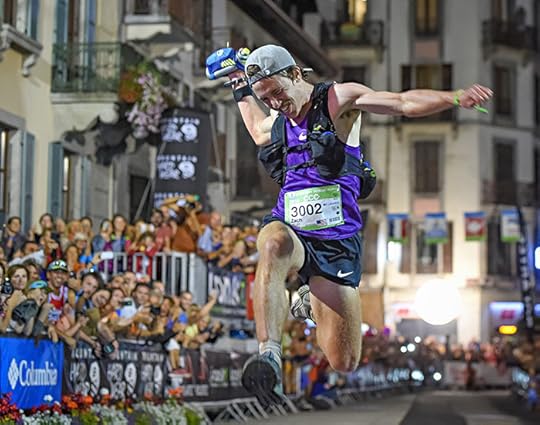
2015 Ultra-Trail du Mont-Blanc
Zach Miller celebrated in style when he crossed the finish line of the CCC in Chamonix. He's the first American to ever win the race. Photo: Michel Cottin/ULTRA-TRAIL DU MONT-BLANC
View Larger Image
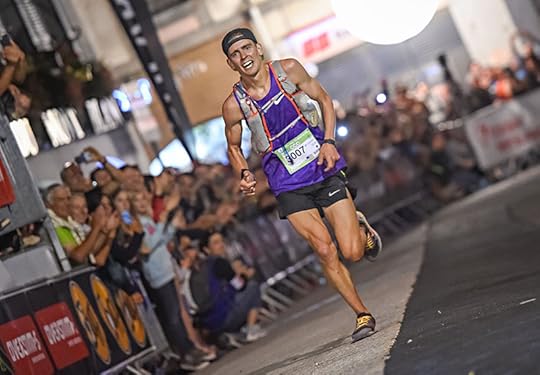
2015 Ultra-Trail du Mont-Blanc
American Tim Tollefson wasn't far behind, finishing second to Miller in the CCC. Photo: Michel Cottin/ULTRA-TRAIL DU MONT-BLANC
View Larger Image

2015 Ultra-Trail du Mont-Blanc
The UTMB race begins at 6 p.m. in Chamonix, sending runners on a 168K (104-mile), through-the-night journey around the Mont Blanc mountain range. Photo: Alexandre Gibral/ULTRA-TRAIL DU MONT-BLANC
View Larger Image
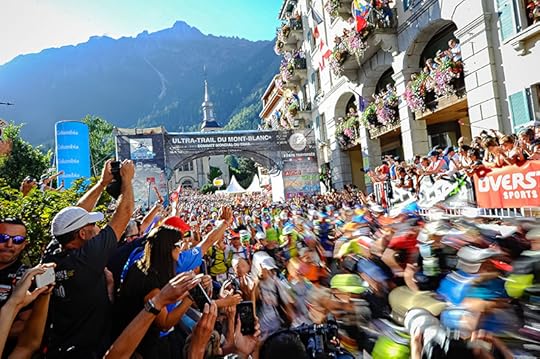
2015 Ultra-Trail du Mont-Blanc
At the start of the UTMB race, thousands of spectators and restaurant patrons cheers on the runners as they leave Chamonix. Photo: Michel Cottin/ULTRA-TRAIL DU MONT-BLANC
View Larger Image
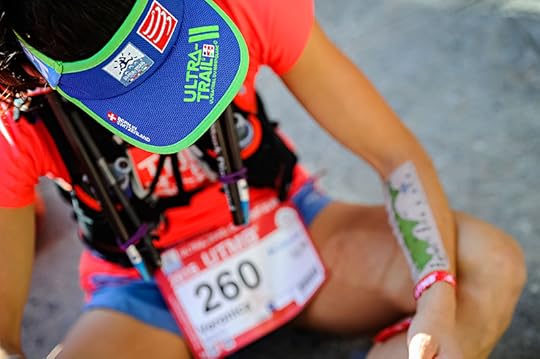
2015 Ultra-Trail du Mont-Blanc
Many runners applied race course profile decals on their arms to keep track of where they were on the course and what was coming up next. Photo: Michel Cottin/ULTRA-TRAIL DU MONT-BLANC
View Larger Image

2015 Ultra-Trail du Mont-Blanc
In the UTMB, runners quickly run out of sunlight. Photo: Pascal Tournaire/ULTRA-TRAIL DU MONT-BLANC
View Larger Image

2015 Ultra-Trail du Mont-Blanc
Frenchman Xavier Thévenard separated from the pack early in the race and dominated over the second half. Photo: Franck Oddoux/ULTRA-TRAIL DU MONT-BLANC
View Larger Image
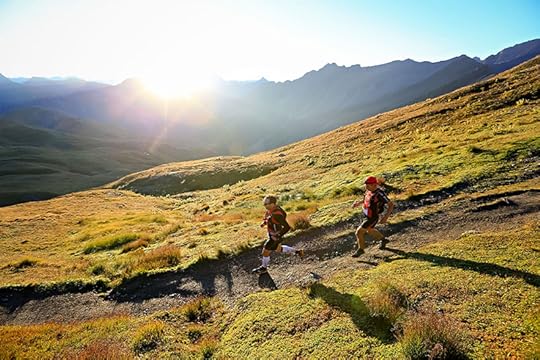
2015 Ultra-Trail du Mont-Blanc
Fast runners only see the sunrise once, but for the middle to back-of-the-back finishers, they'll see the sun rise on Sunday morning too. Photo: Franck Oddoux/ULTRA-TRAIL DU MONT-BLANC
View Larger Image
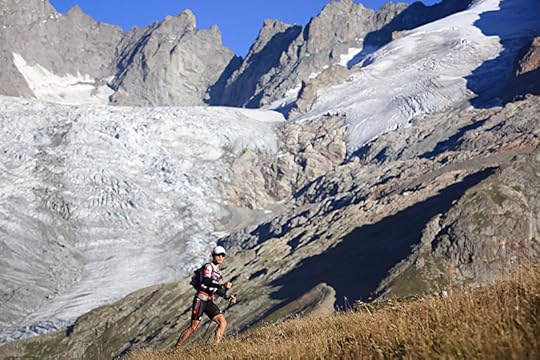
2015 Ultra-Trail du Mont-Blanc
Historic, slow-moving glaciers are a common site on the UTMB course and provide an interesting contrast to the runners who are trying to move as fast as possible around the mountain. Photo: Franck Oddoux/ULTRA-TRAIL DU MONT-BLANC
View Larger Image
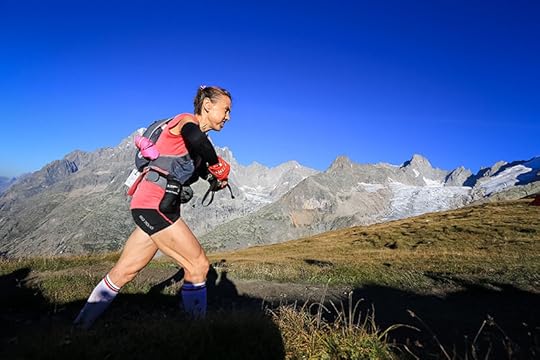
2015 Ultra-Trail du Mont-Blanc
Nathalie Mauclair charges up a climb in Italy. Photo: Pascal Tournaire/ULTRA-TRAIL DU MONT-BLANC
View Larger Image
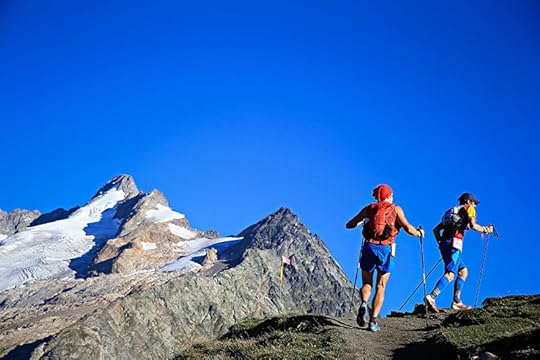
2015 Ultra-Trail du Mont-Blanc
About 75 percent of the runners in the UTMB and CCC races carry trekking poles for assistance getting up steep ascents. Photo: Franck Oddoux/ULTRA-TRAIL DU MONT-BLANC
View Larger Image
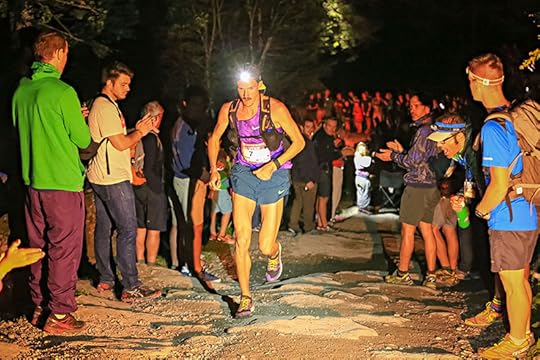
2015 Ultra-Trail du Mont-Blanc
American David Laney started conservatively and moved up the entire race, eventually finishing third overall. Photo: Franck Oddoux/ULTRA-TRAIL DU MONT-BLANC
View Larger Image
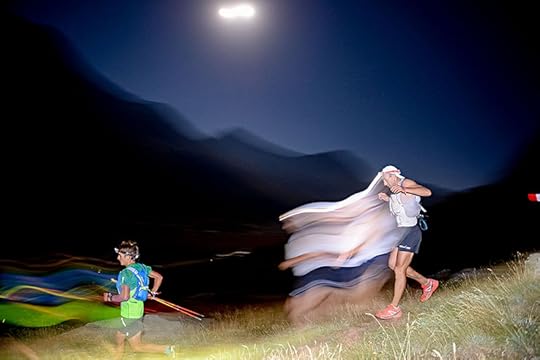
2015 Ultra-Trail du Mont-Blanc
Unlike some American ultra races, pacers are not allowed in the UTMB. Photo: Pascal Tournaire/ULTRA-TRAIL DU MONT-BLANC
View Larger Image

2015 Ultra-Trail du Mont-Blanc
Photo: Pascal Tournaire/ULTRA-TRAIL DU MONT-BLANC
View Larger Image

2015 Ultra-Trail du Mont-Blanc
The steep descents in UTMB have been known to destroy runners' legs well before they reach the edge of their aerobic fitness. Photo: Pascal Tournaire/ULTRA-TRAIL DU MONT-BLANC
View Larger Image

2015 Ultra-Trail du Mont-Blanc
Each of the races during the UTMB week have aid stations in villages or mountain huts (also known as refugios) like this one. Photo: Pascal Tournaire/ULTRA-TRAIL DU MONT-BLANC
View Larger Image
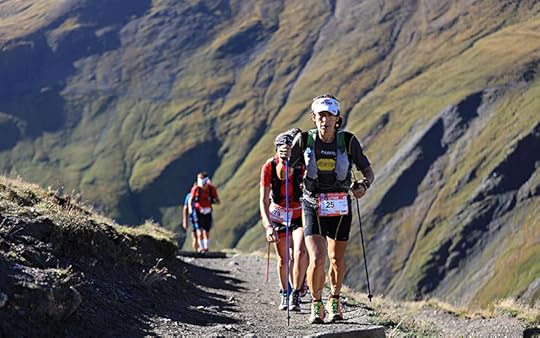
2015 Ultra-Trail du Mont-Blanc
Spain's Uxue Fraile Azpeitia charges up a mountain using her trekking poles. She would eventually finish second, about 75 minutes behind the winner. Photo: Pascal Tournaire/ULTRA-TRAIL DU MONT-BLANC
View Larger Image
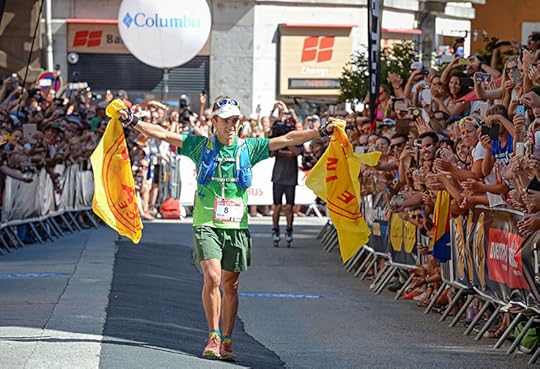
2015 Ultra-Trail du Mont-Blanc
Frenchman Xavier Thévenard got his due reward from the adoring spectators when he won the UTMB in 21 hours, 9 minutes. Photo: Pascal Tournaire/ULTRA-TRAIL DU MONT-BLANC
View Larger Image
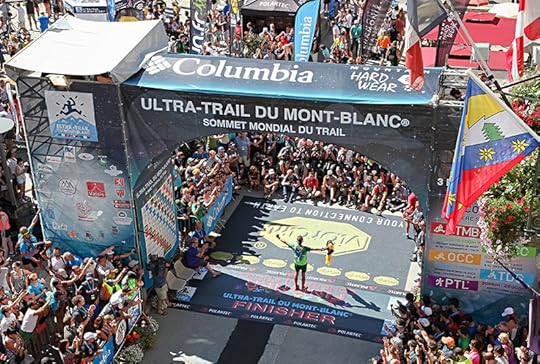
2015 Ultra-Trail du Mont-Blanc
Xavier Thévenard savored the moment after winning the UTMB for the second time in three years. Photo: Alexandre Gibral/ULTRA-TRAIL DU MONT-BLANC
View Larger Image
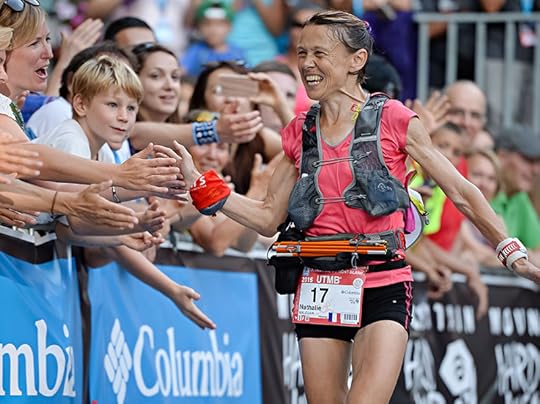
2015 Ultra-Trail du Mont-Blanc
Nathalie Mauclair, who works full-time as a nurse, became the second French woman to win the UTMB. Photo: Pascal Tournaire/ULTRA-TRAIL DU MONT-BLANC
View Larger Image
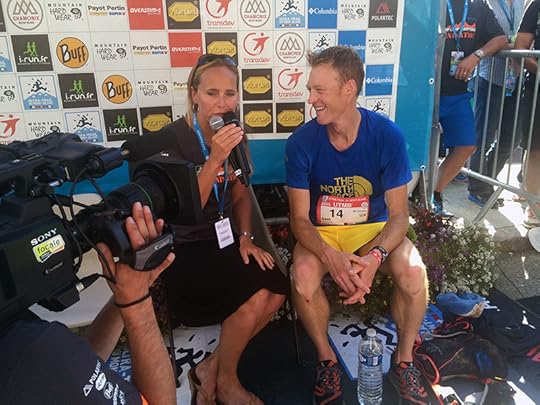
2015 Ultra-Trail du Mont-Blanc
American Seth Swanson turned in yet another strong race, adding a fourth-place finish at the UTMB to a season that included a runner-up showing at the Western States 100. Photo: Brian Metzler
View Larger Image
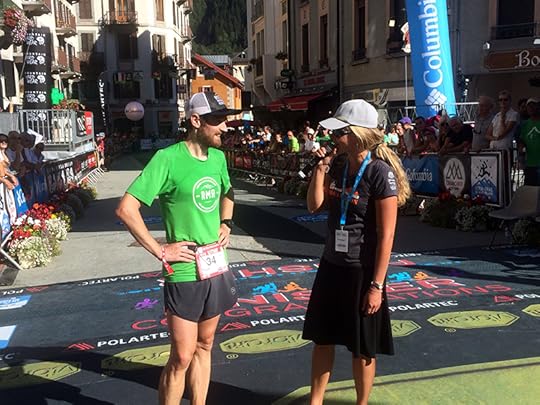
2015 Ultra-Trail du Mont-Blanc
Ryan Smith, a British runner who lives in Boulder, Colo., turned in a gem of a race at his first UTMB, finishing ninth overall. Photo: Brian Metzler
View Larger Image
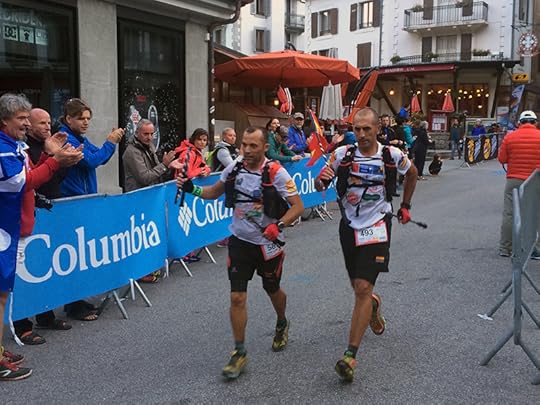
2015 Ultra-Trail du Mont-Blanc
Runners have until Sunday afternoon to finish the UTMB in order to beat the 46-hour cutoff. Jose Luis Barcia Caro and Jose Carreno Roman of Spain tied for 425th place in 37:21 early on Sunday morning. Photo: Brian Metzler
View Larger Image
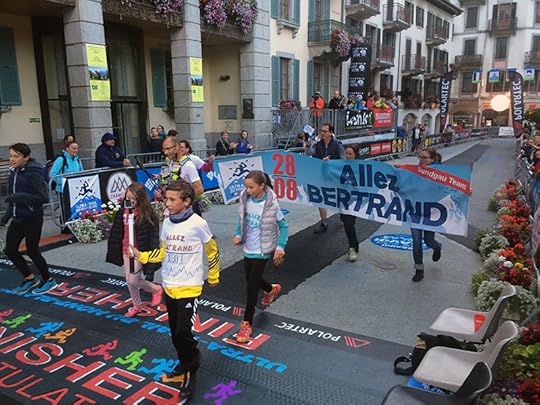
2015 Ultra-Trail du Mont-Blanc
Frenchman Bertrand Munck was overjoyed to have his entire family run in with him on Sunday morning as he finished in 37:32. Photo: Brian Metzler
Related Galleries
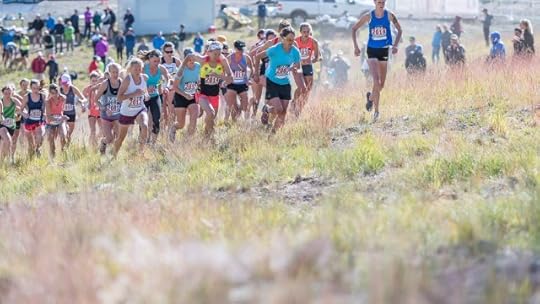
Photos: 2015 U.S. Mountain Running Championships
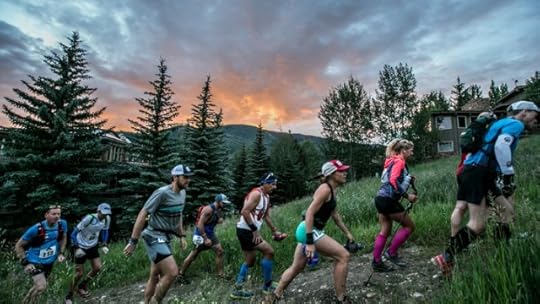
Photos: 2015 Audi Power of Four Trail

8 Off-Road Essentials
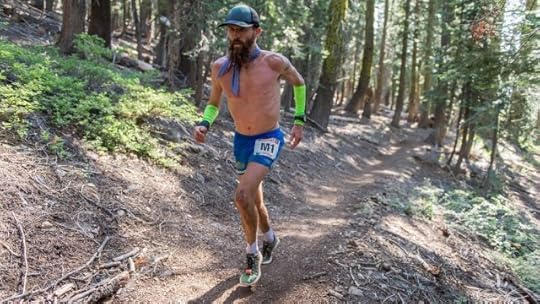
Photos: 2015 Western States Endurance Run

More Galleries
The post Photos: Amazing Images from the 2015 Ultra-Trail du Mont-Blanc appeared first on Competitor.com.
Workout of the Week: 2 x 6 Miles

A good 2 x 6 workout can signal a good marathon a few weeks later. Photo: ShutterStock.com
Fall is right around the corner and many runners will be digging into the meat of their marathon training over the next 1-2 months. Elite or age-grouper, we all like to have a key workout leading up to our big race that, when we can nail it, lets us know we’re in a good position to achieve our goal.
The 2 x 6-mile workout is one of the benchmark sessions for the members of the Hansons-Brooks Distance Project, an elite group of professional distance runners based in Rochester Hills, Mich., which has produced Olympians Brian Sell (2008) and Desiree Davila (2012), and has seen numerous personal bests set amongst the rest of the team since forming in 1999. The Hansons-Brooks athletes know that when they hit the 2 x 6, which is always performed three weeks before their goal marathon, that they’re ready to race well.
RELATED: The 5-4-3-2-1 Long Run
“I think there’s a lot to this workout,” says Luke Humphrey, head coach of Hansons Coaching Services, author of both the Hansons Marathon Method and Hansons Half Marathon Method and 2:14 marathoner who has been a member of the Hansons-Brooks Distance Project since 2004. “To me, if you can be tired but run somewhat controlled and hit your splits, then you are in a good position. Some people will feel amazing and that’s OK too; however, if you feel sluggish and tired but can ‘toughen up’ a little on the second of the six miles, then I think you get a real idea of where you are for strength. It gives you a good idea of what you are going to have to do in the later parts of the marathon.”
So how can you make the Hansons’ 2 x 6-mile workout work for you?
After a 3-mile warmup, form drills and strides, run 6 miles at 5 seconds per mile faster than your goal marathon pace. So, if your 26.2-mile goal pace is 8 minutes per mile, you aim to hold steady at 7:55s for 6 miles. After completing the first 6-mile segment, take 10 minutes to shed clothes, use the bathroom or jog around a little bit before going into another 6 miles at the same pace as the first: 5 seconds per mile faster than goal marathon pace. If you’re feeling good, it’s OK to pick up the pace a little bit—maybe another 5 or so seconds per mile—but you want to avoid racing the second 6-mile segment and compromising your recovery for the next workout a few days later, Humphrey says.
“I don’t recommend blasting the second one,” Humphrey advises. “I feel like we already do a lot of hard work and speeding up on the second one only takes away from your ability to recover for the next workout and provides no real extra stimulus. I feel like I’ve never raced well after crushing this workout.”
The post Workout of the Week: 2 x 6 Miles appeared first on Competitor.com.
Generation Next: America’s Fastest Young Runners
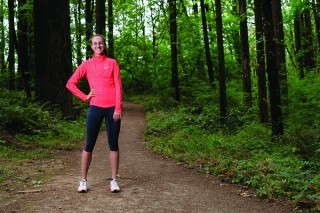
Photo: Isaac Lane Koval
The next crop of American runners is already here. We take a look at 15 of the country’s best young runners who are already making a big impact in marathons, trail running, cross country, and track and field.
Alexa Efraimson, 18
Camas, Wash.
When people talk about the next great American female running phenom, they often mention Mary Cain. But someone who also deserves to be in that limelight is Alexa Efraimson. Like Cain, this middle-distance ace decided to skip college running and turn pro. (She’s training under the guidance of her high school coach Mike Hickey and taking classes at University of Portland.) Last year, she broke Cain’s American high school indoor record for the 3,000 meters by almost 2 seconds (9:00.16). In 2013, Efraimson won bronze at the World Youth Championship 1,500m event. “I attribute my success in running to my support group, my close friends, my family, my coach and my training partners,” Efraimson,says. “They are there through the ups and the downs and they always believe, not only on race day but every day, which I think is one of the strongest contributors to my success.” Efraimson is currently focusing on the 1,500m—a distance she thinks she’s best at running. She lowered her 1,500m PR to 4:03.39, setting a new American junior record while placing seventh at the Pre Classic international track meet on May 30 in Eugene, Ore. “I like to take one season at a time and one race at a time, each as a stepping stone and learning opportunity,” she says. —Duncan Larkin
The post Generation Next: America’s Fastest Young Runners appeared first on Competitor.com.
Four-Legged Fun: A Guide to Running With Your Dog
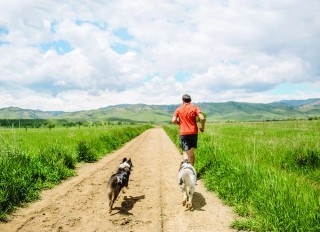
Know the local leash laws before heading out on a trail with your dog, and always have a leash handy for safety. Photo: Julia Beck Vandenoever
Dogs make great running partners. They’re almost always game for whatever route you have in mind. They never have scheduling conflicts. And they’re extremely happy while running, their joy undeniably rubbing off on you. Plus, knowing your dog needs exercise provides a motivational bonus for you, getting you both out the door.
But how do you know if your dog is fit to run? Or needs a recovery day? And where are the best places to take your dog running with you? Follow our guide to ensure both you and pup make the most of running together.
Puppy? Be Patient
Most vets recommend waiting until a puppy is 1 to 2 years old, depending on the breed, before taking them running with you. “You want to wait until they’re fully skeletally mature, when their growth plates are done closing,” says Dr. Elisabeth Jobe of Advanced Animal Care of Colorado. “When the bones are developing, and you’re putting stress on them, you can cause premature closure of the growth plates which increases the risk of arthritis and other issues.”
Smaller breeds mature sooner than larger breeds, and can be ready to run when they’re a year to a year and a half. Larger breeds can take 18 to 24 months. Check with your vet for more specific guidance.
Dogs Need Training, Too
Like people, dogs shouldn’t go from off-the-couch to running 5 miles without training. “It’s important to build endurance in dogs gradually, just as you would in humans,” says Dr. Lynne Hapel of Eastown Veterinary Clinic in Grand Rapids, Mich. Gradually building up to longer distances is key to getting a dog’s whole body toned evenly, which helps prevent injury from doing too much, too soon.
“Simulate what they’re going to be doing,” Jobe says. “Do that same type of activity in small amounts initially, and increase by 10 to 15 percent every 14 days or so.
Hiking and run-walking can ease a dog into running shape, and hiking is an ideal start for dogs and owners who will be trail running together.
With the right dog and a gradual buildup of training, you may be surprised at how long your dog can go. Joelle Vaught, an ultrarunner from Boise, Idaho, has been running with her German Shorthair pups for years. “We’ve done 50Ks together!” she says.
RELATED: An Ultrarunning Trail Fiend of a Dog
Where To Run
Soft surfaces like dirt and grass are better for paws than pavement and concrete. “Running on gravel or rock can be painful to a dog,” says Judy Morgan, holistic veterinarian in Clayton, N.J. “And pea gravel can get between pads and cause irritation.” Remember: You’re wearing protective shoes; they aren’t.
If you head to a trail, know the leash laws in your area. Some trails have voice control laws that allow your dog off-leash if they’ve undergone proper training and wear a certain tag to prove it. While some vets recommend always having a dog on leash (but not a retractable leash, which can extend too long) for the safety of the owner, the dog, and those around them, others say it depends on the dog. Having a leash handy (even if a dog is running off-leash) can help quell unexpected confrontations with other dogs or trail users (especially at a trailhead), as well as the instinct to chase wildlife.
Running on dirt surfaces in tree-covered areas is ideal, as the shade keeps the trail cool in hot months. And running on hilly terrain that slows you down can be good for your dog, as they’re better able to keep up. Just make sure to go easy on them and train them for the hills as you would yourself.
If you do run on concrete through urban areas, plan wisely. Jobe says she runs on sidewalks while letting her dogs run on the grass alongside. And Hapel recommends planning routes where you know fresh water is available.
Check For Ticks
Post-run, it’s important to check your pup’s fur and skin for burrs, and their pads for any tears. But if you live somewhere that has ticks of any sort, be sure to scan your dog for those, too.
Bernadine Cruz, a veterinarian in Orange County, Calif., recommends getting preventive tick medicine from your vet. But if you do find a tick on your pup, she suggests using tweezers, needle-nose pliers or roach clips instead of your fingers. “You don’t need to twist it. Just grab as close to the skin as possible and pull straight up. The bump left over isn’t a head—it’s just a reaction. Clean the area with a little alcohol.”
It’s best to remove a tick within 24 hours of latching on, so get in the habit of checking both your dog and yourself post-run.
“If your pet develops any symptoms—anything that just seems off for a day or two, if they’re weak, vomiting, diarrhea, stiff in the joints, have a fever—have them looked at,” Cruz says.
Health and Safety
Running on a trail near a water source can give your dog a place to cool down by wallowing in a creek or cooling their belly in a lake. There, however, you run the risk of your dog lapping up water that might have giardia or other intestinal threats. If you know your dog will run into any water it sees, keep it on a leash and bring ample water for both of you.
Know that dogs don’t sweat, but rather pant to cool off. To keep them cool in summer months, exercise with them in the early morning or late evening. And if you live somewhere with a snowy, icy winter, consider putting them in a jacket or sweater made for dogs (if they’ll let you). And check their paws frequently during the run for snow and ice balls, clearing the space between their toes from built-up snow.
Most importantly, be sure to listen to your dog and look closely for any changes in its gait as you run.
“Limping means pain,” Jobe says. Your pup could have stepped on something like a cactus spine, or have a minor cut on one of their pads, but a limp could also suggest something more serious.
How Much Is Too Much?
Since your dog wants to please you, it might run with you beyond its limit. “If you stop for a break and your dog lies down right away, that’s a good sign that they’ve had enough,” Jobe says.
She also advises that if your dog seems tired for more than four to six hours after exercising, then it was too much. And if your dogs wakes that afternoon or evening and seems stiff, taking longer than usual to get up or down, then it’s time to back off on the running a bit.
And, if your dog kicks one leg out all the time, they might be shifting away from that leg for a reason. “It’s something to think about,” Jobe says.
The post Four-Legged Fun: A Guide to Running With Your Dog appeared first on Competitor.com.
Ryan Hall's Blog
- Ryan Hall's profile
- 21 followers



